The purpose of a guitar’s finish goes beyond just aesthetics. That’s because the type of finish applied to a guitar’s body and neck can actually affect how the instrument sounds, feels, and ages.
If you’re shopping for a new guitar, it’s worth considering the finish it has. In this article, we compare the two most common types you’ll come across – ‘nitro’ and ‘poly’.
There are many subjects that split opinion among guitarists. And believe it or not; guitar finish types is one of them. Although most players aren’t too concerned about the type of finish that’s been applied to their guitar, for some players and luthiers – it’s a crucial factor in tone, feel, and authenticity.
Two main sides split this debate; those that favour old-school nitrocellulose lacquers, and those that are content with modern polyester and polyurethane finishes. Traditionalists find the former more appealing, as nitrocellulose was used almost exclusively on vintage instruments from the golden era of guitar production. On the other hand, many players prefer poly finishes for their durability, consistency, and modern appearance.
Let’s explore these two finish types in more depth – their pros, cons, and how they affect your playing experience. We hope that by the end of this article you’ll have a better understanding of their differences and which finish is right for you.
Nitro Guitar Finish
Nitrocellulose lacquers have been around for almost a century; originally used for acoustic instruments, saxophones and even cars. By the 1950s and ’60s, Fender and Gibson adopted nitrocellulose almost exclusively for their electric guitars. Fender also experimented with acrylic during this period, but nitrocellulose was generally favoured for finishing guitars as it could form a nicer gloss.
What is a Nitro finish? Nitrocellulose lacquer, often referred to simply as “nitro,” is a solvent-based finish made by treating cellulose (a natural compound found in plants) with a mix of nitric and sulfuric acids.
A nitro finish is applied multiple times over several days – the solvent evaporates off, leaving a thin nitrocellulose coating. Each subsequent coat essentially melts into the previous one to bond together, eliminating the need to sand between layers. The uniform coating produced can then be hand-buffed to a glossy sheen.
Pros & Cons of Nitro Guitar Finishes
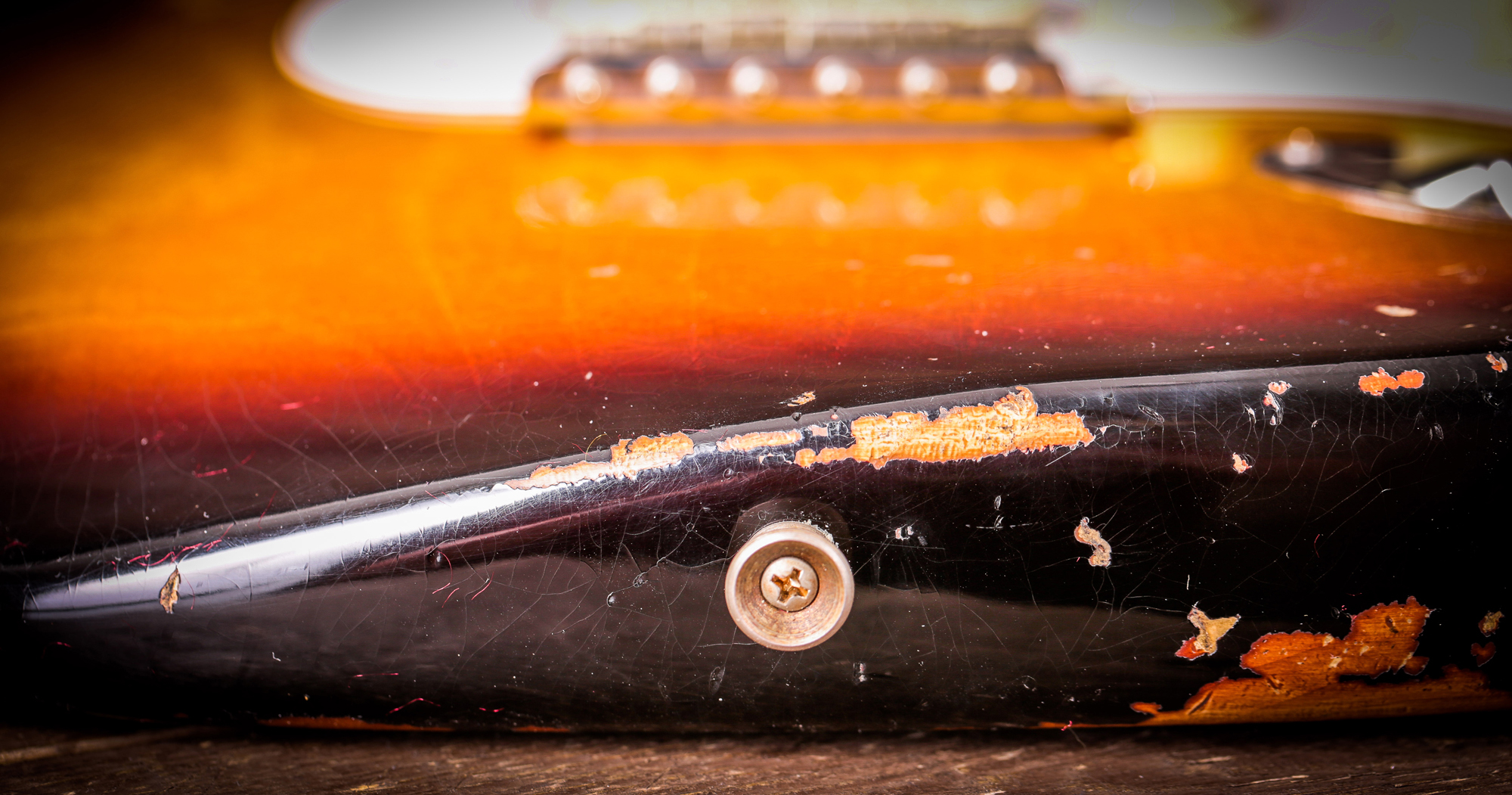
Nitrocellulose is considered to be more porous than polyester or polyurethane, with a thin, smooth and somewhat slippery texture that isn’t quite as solid or constrictive. Many purists have therefore believed that a nitro finish allows a guitar’s wood to ‘breathe’, yielding a more open sound and greater sustain.
However, this belief is now generally considered a bit of a myth, at least when it comes to electric guitars. In reality, any tonal differences between nitro and poly finishes aren’t due to the wood ‘breathing’ but only really due to the thickness of finish. the type of finish plays only a very minor role in overall tone, especially compared to more impactful components like pickups, hardware or neck construction.
Where a nitro finish really stands out is in how it feels and looks, especially over time. It has a soft, natural-feeling texture that many favour over the harder, more plastic-like feel of a poly finish. However, its softer texture does make it susceptible to cosmetic damage. This means that dings and scratches are more visible on guitars with nitro finishes, and much easier to inflict. A nitrocellulose lacquer also wears away over time, causing dulling in areas where you make regular contact with your guitar; such as the lower bout where your forearm rests.
Nitro finishes age in a distinctive way – yellowing, especially when exposed to excessive sunlight, and developing small cracks after several years too. That’s not great if you want your guitar to look exactly the same in 10 years as it does now, but it’s amazing for anyone who wants their instrument to develop a worn-in, vintage look and feel. These aging properties make nitro the definitive top choice for Relic guitars.
Pros of Nitro Finishes
- Naturally ages with use, creating a worn-in look and feel
- Has a softer, more natural texture
- Can be easily removed or refinished with reapplication of a solvent
- Traditionally produced thinner coats than poly finishes which may have a small effect on resonance and sustain
Cons of Nitro Finishes
- Susceptible to scratches, dings, and wear
- Prone to yellowing and cracking over time
- Takes longer to apply and cure
- Extremely flammable in solution, so particularly dangerous to work with
Which Guitars Have Nitro Finishes?
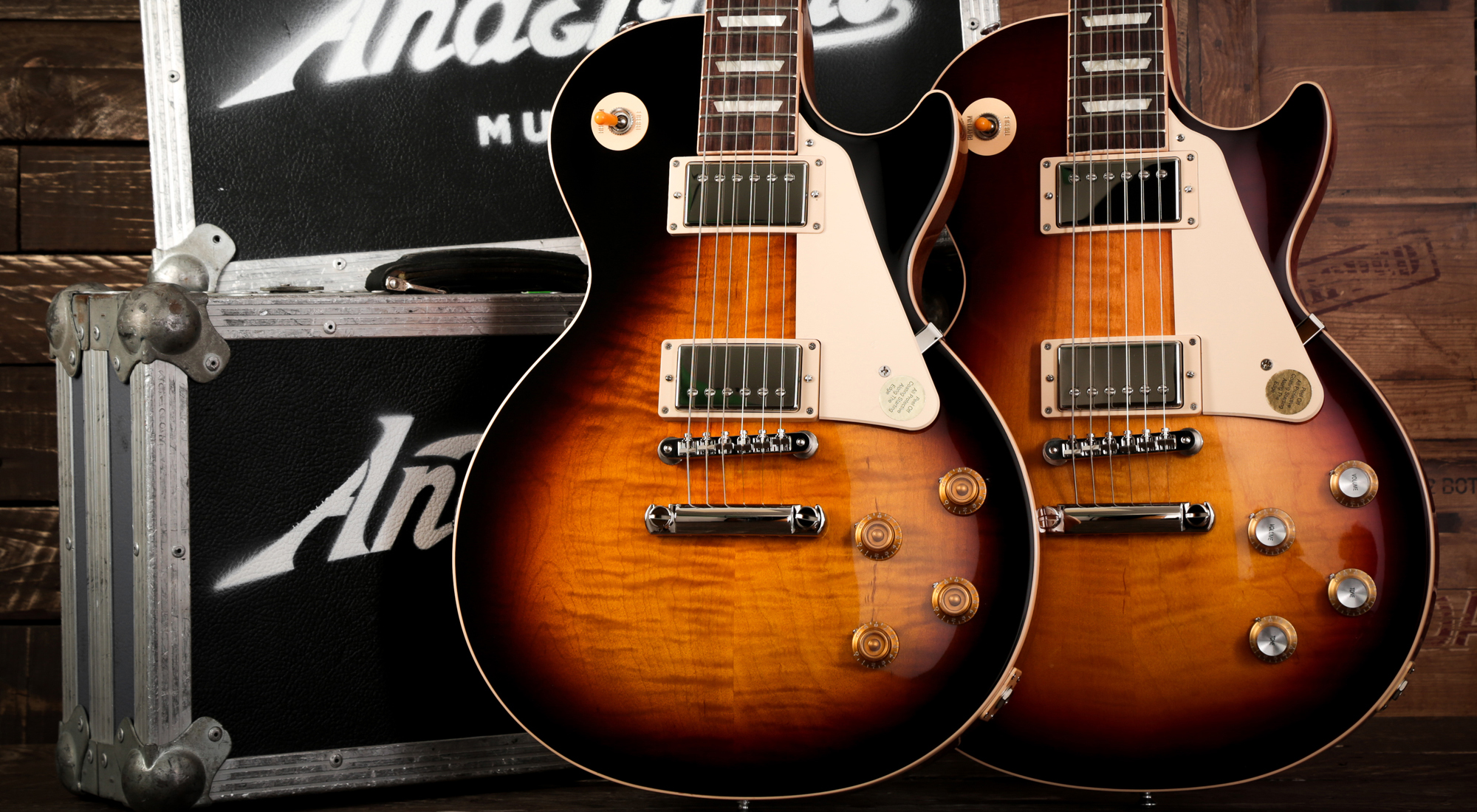
These days, this type of guitar finish is used almost exclusively by Gibson and Fender’s Custom Shop divisions. As these departments mostly produce premium time-honoured instruments, they therefore use nitro finishes to recapture the essence of their older vintage models. Nitro lacquers are also typically used on more expensive guitars as the application process is time-consuming and requires several layers. They must also be carefully hand-buffed and sanded at the final stage to ensure a consistent, professional quality.
Fender Custom Shop
Shop Fender Custom Shop
Gibson Custom Shop
Shop Gibson Custom Shop
What Is a Relic Guitar?
A relic guitar is a high-end instrument that has been artificially aged to replicate the look and feel of a vintage guitar. This includes wear on the body, neck, and hardware – such as cracking, dings, faded or yellowed finishes, and tarnished metal parts.
Relic guitars have become increasingly popular with players who want the look and feel of a well-played vintage instrument. Fender Custom Shop, Gibson Murphy Lab, and other boutique builders now offer relic’d models at various levels of wear – from light “closet classic” aging to full “road-worn” distressing.
Because nitrocellulose is easier to age naturally or artificially, relic guitars almost always feature a nitro finish. Poly finishes are too durable to wear convincingly, making them a poor choice for relic-style instruments.
If you want to learn more, check out our in-depth article: What is a Relic guitar?
Poly Guitar Finish
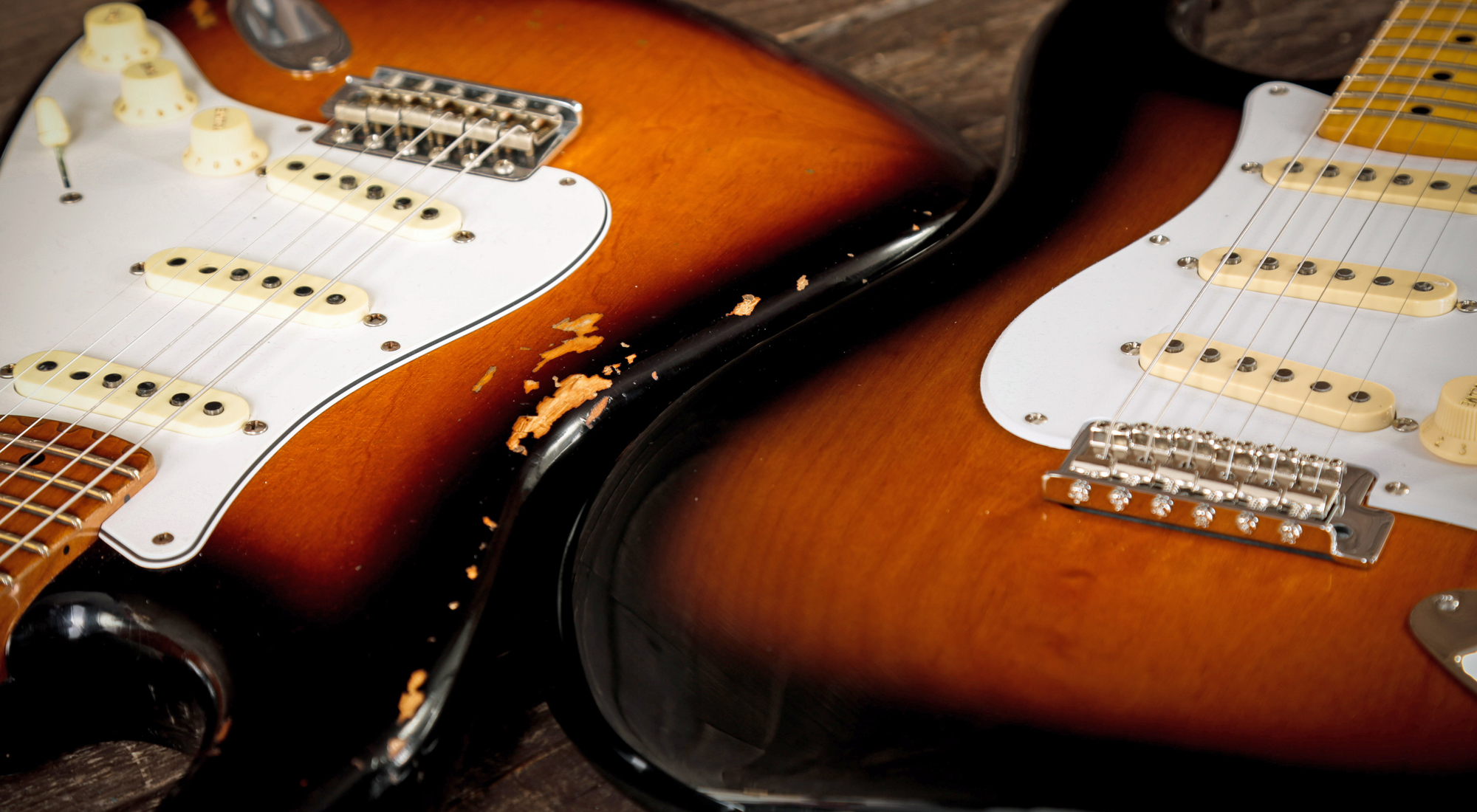
Polyurethane and polyester guitar finishes are considered the industry standard; the modern norm if you will. These synthetic resin-based coatings became popular in the late 1960s as more practical alternatives to the traditional nitro lacquers, which are flammable and emit high levels of VOCs (volatile organic compounds).
Modern poly finishes are generally easier to apply, cure faster, and offer greater durability. While they can still contain some solvents, many newer formulations – such as low-VOC, water-based, or UV-cured finishes – are far more environmentally friendly than nitro. Poly coatings are generally more cost-effective than nitro too and tend to require fewer coats to achieve a glossy, protective finish.
Pros & Cons of Poly Guitar Finishes
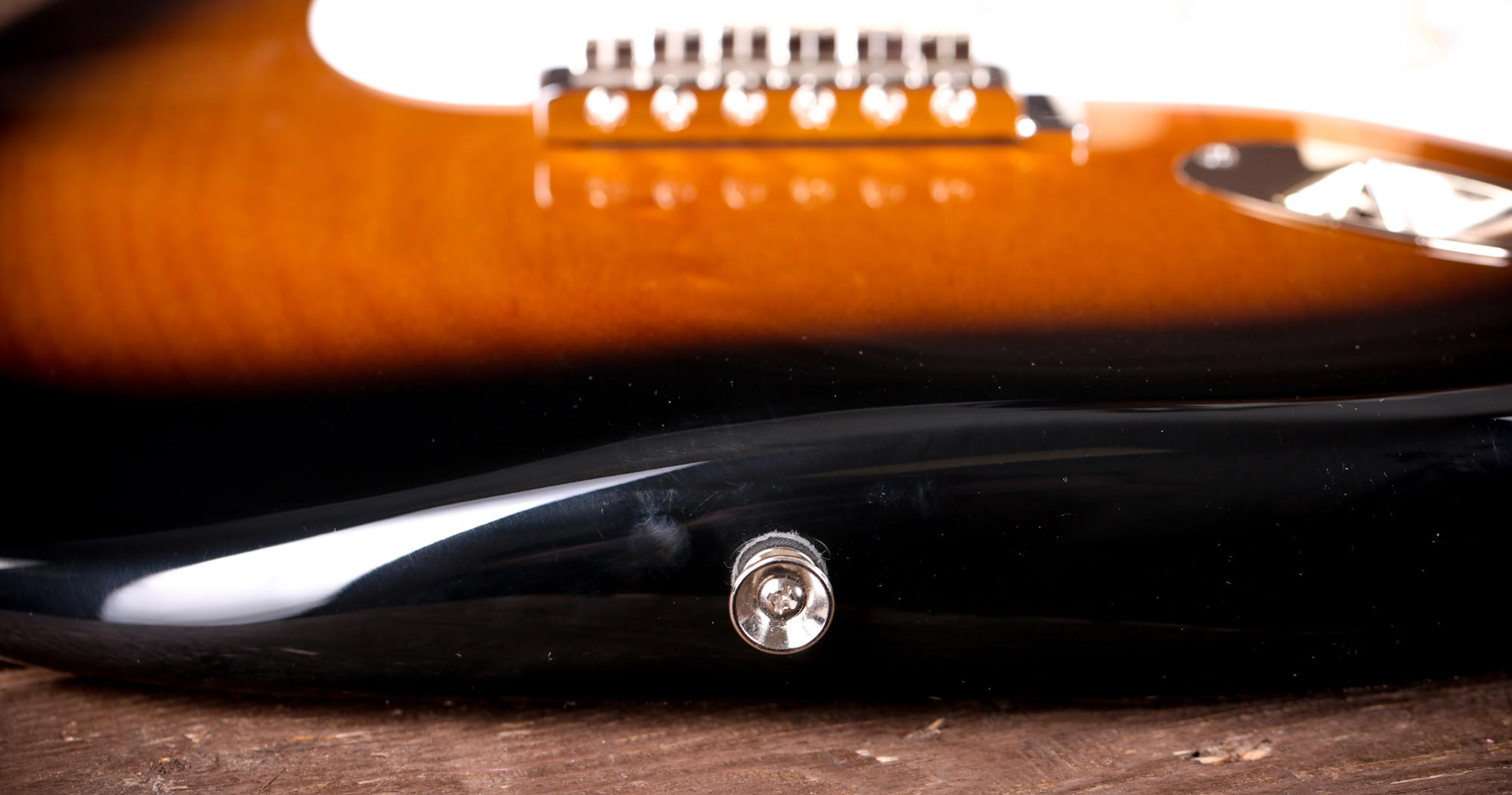
Apart from their relative simplicity, poly guitar finishes are also a lot harder and stronger than nitrocellulose, with a glossier look. Their strength makes them more resistant to cracks as they cover the instrument more successfully, lessening the chance of wood expansion/contraction. Poly finishes, especially on older models, can be thicker and heavier than a nitro finish which can lead to a less acoustically resonant instrument with decreased sustain. However, most modern guitars with poly finishes will have comparatively thin coats, meaning any tonal differences will be generally imperceptible.
Polyester and polyurethane guitar finishes are also more resistant to general wear, meaning that scratches and dings are harder to see and inflict. Poly finishes can remain shiny even after decades of use, and don’t fade away in the areas that you’d typically make contact with. If you want your instrument to look new forever, then a poly finish is superior to nitro lacquer. Of course, you’d still need to take good care of your guitar, and our range of electric guitar care products can help your instrument to maintain a showroom look! Check out our Guitar Cleaning Guide here.
Guitar Care
Shop Guitar Care
Pros of Poly Finishes
- Thicker and more durable than nitro
- Highly resistant to scratches, dings, and UV damage
- Maintains a glossy, like-new appearance for years
- Faster and more cost-effective to apply
Cons of Poly Finishes
- Thicker finishes may dampen resonance slightly
- Doesn’t develop the vintage wear that some players love
- Has a harder, more plastic-like feel
Which Guitars Have Poly Finishes?
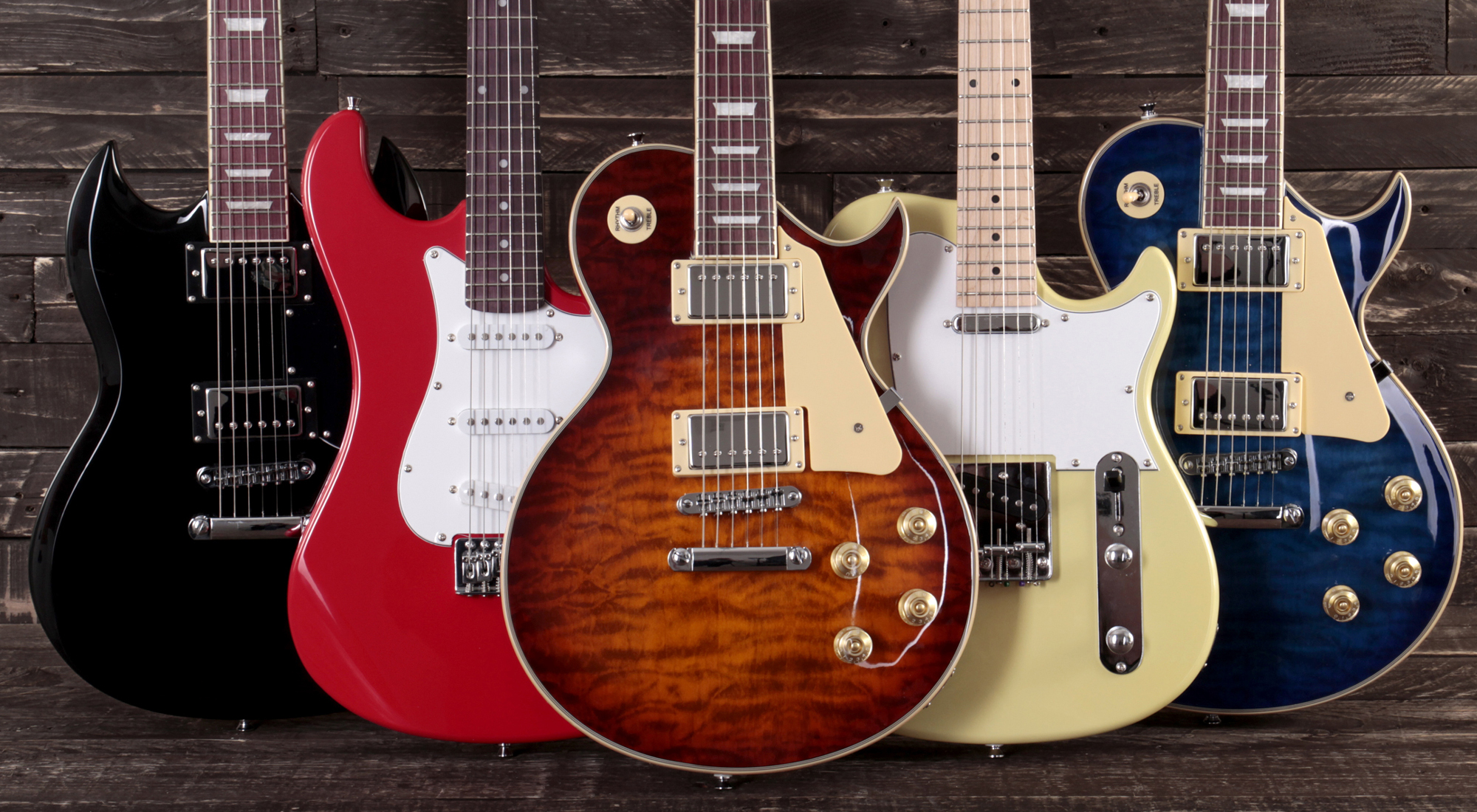
Poly finishes have become the go-to choice for modern instruments, both affordable and expensive. The feel of a poly finish is harder, and more plastic-like than a nitro finish, but their durability and longevity has made them a mainstay in guitar manufacture. Really the choice is up to you. Nitro delivers a softer feel that visibly ages and shows the story of your guitar journey with every bump or ding along the way. Poly provides a harder, more durable, unchanging finish that will be reliable for many years to come.
Although nitro finishes are more synonymous with premium instruments, it doesn’t mean that poly finishes scream “cheap”. Poly is used on instruments both affordable and expensive, from beginner guitars to premium hand-made instruments.
Nitro Finishes vs. Satin, Gloss, and Oil: How Do They Compare?
How does a classic Nitro finish compare against some other popular choices?
- Satin finishes are usually a form of poly but with a more matte texture. They feel smoother to the touch, reduce glare and are less prone to fingerprints and smudges. However, they still don’t offer the same aging or soft feel as nitro and scratches can show more visibly than on a gloss poly finish.
- Gloss finishes can be achieved with both nitro and poly, but poly tends to stay glossy longer. Nitro gloss dulls and wears over time.
- Oil finishes (like Tru-Oil or Danish oil) are common on boutique or handmade instruments. They soak into the wood rather than sit on top, giving a natural feel and tone but offering far less protection. Oil finishes also require much more regular maintenance to preserve their quality.
Each finish type serves a different purpose, from the most durable and long-lasting, to the softest, most natural feel.
Want to Learn More?
Electric Guitar Tonewood Guide
Upgrading your Budget Guitar vs. Buying a New Guitar
Interested in finding out more about music gear and expanding your knowledge? Click here to view all of our Labs articles!



Responses & Questions